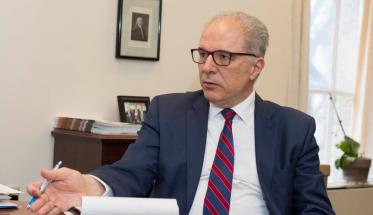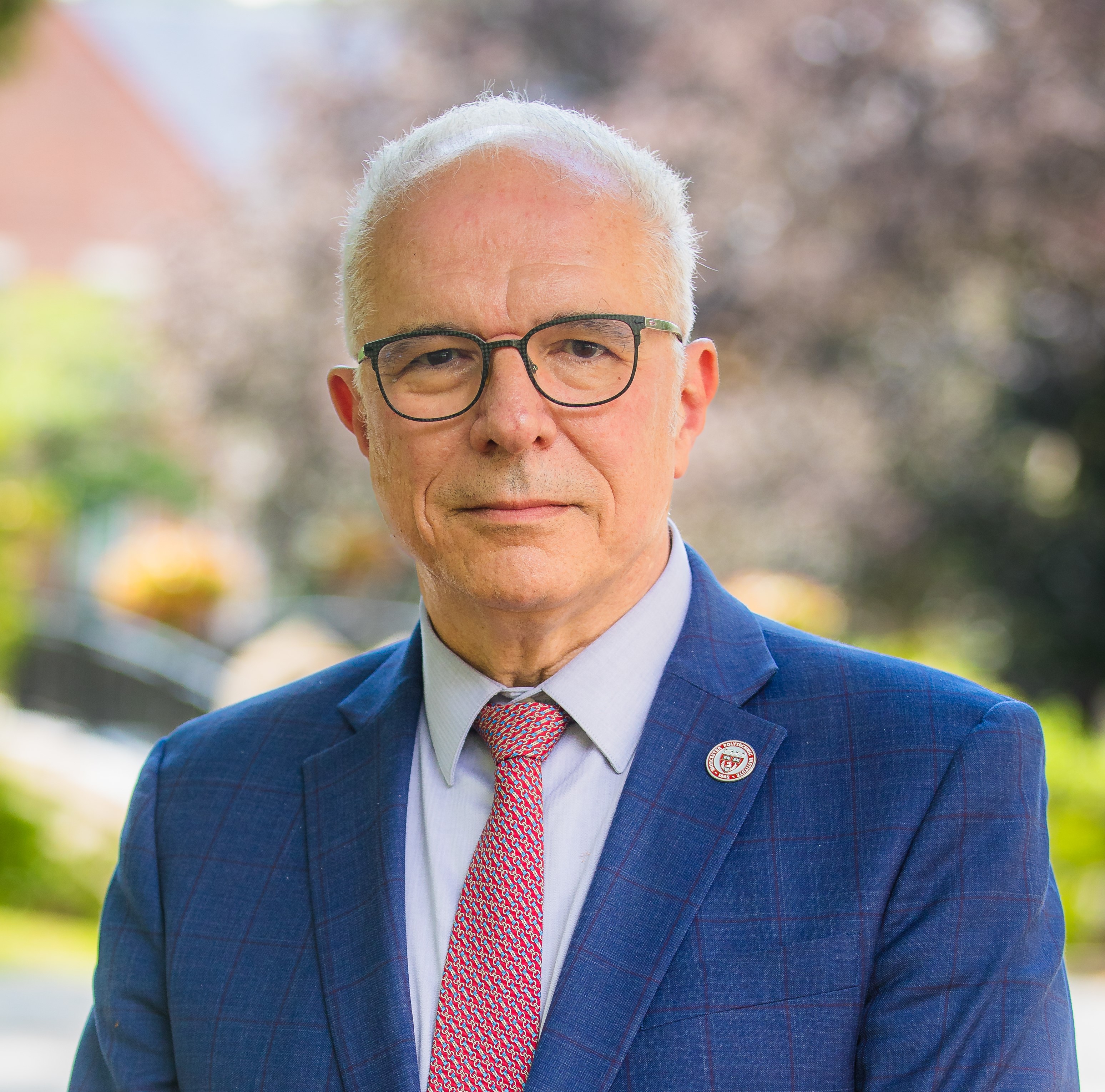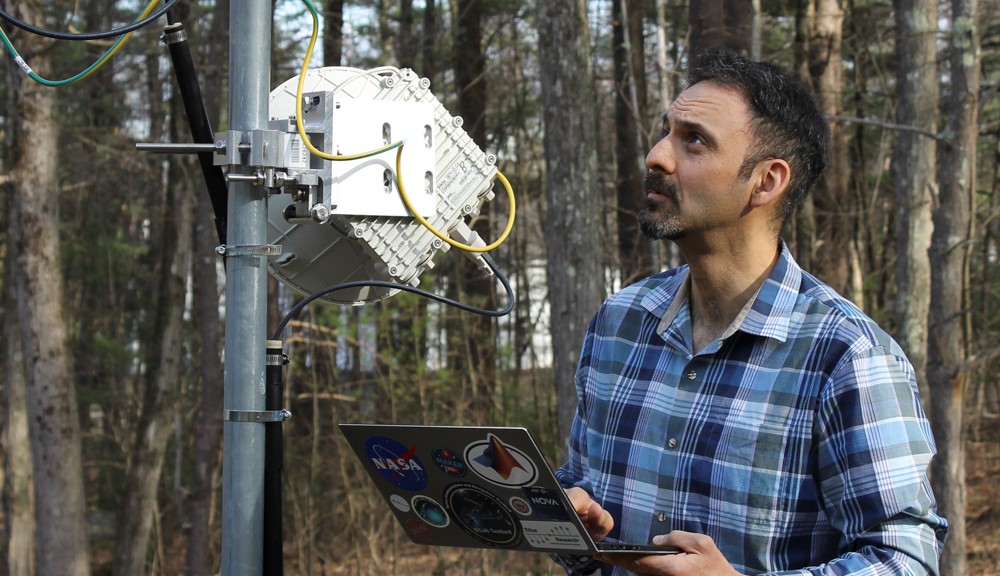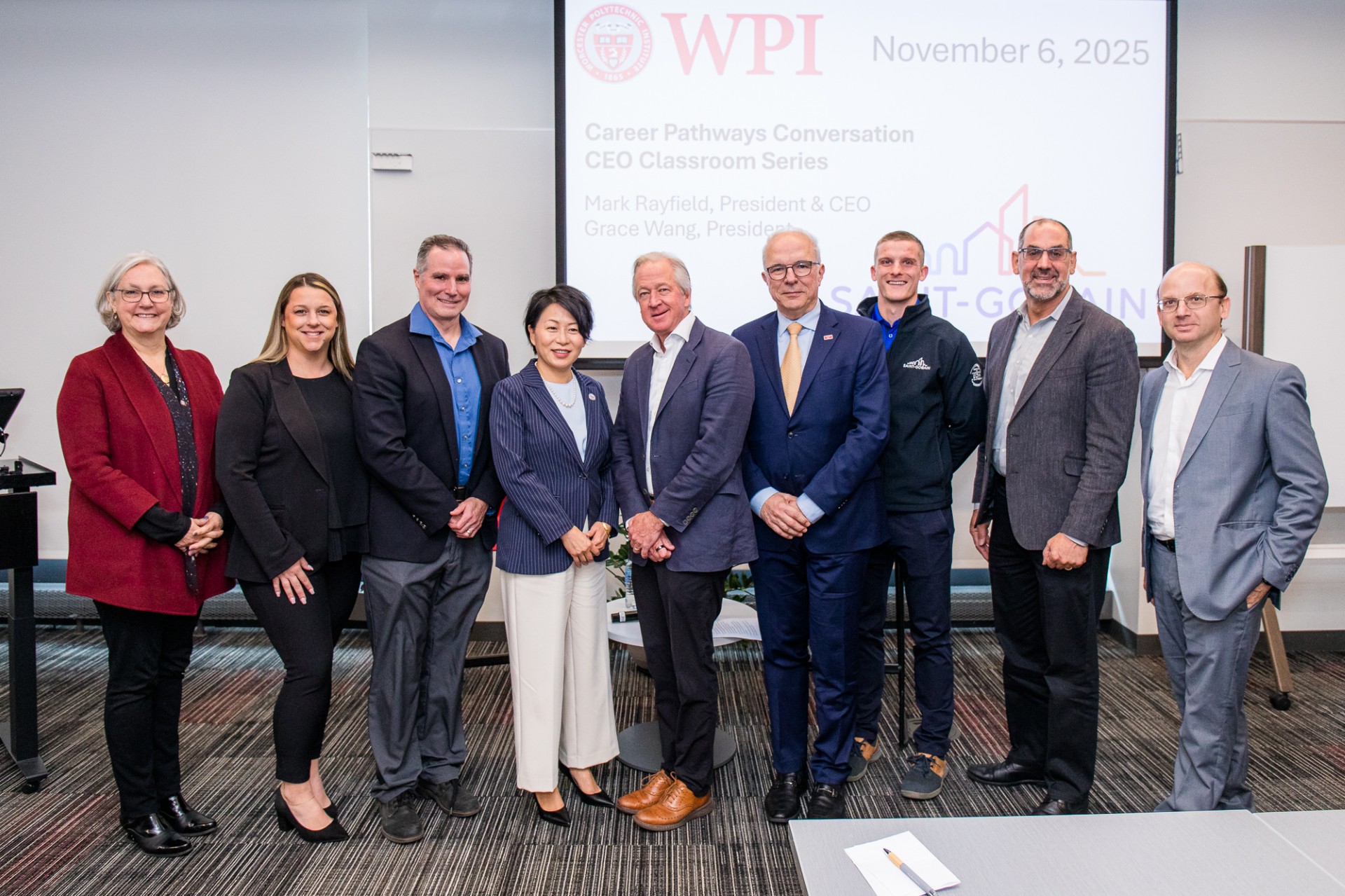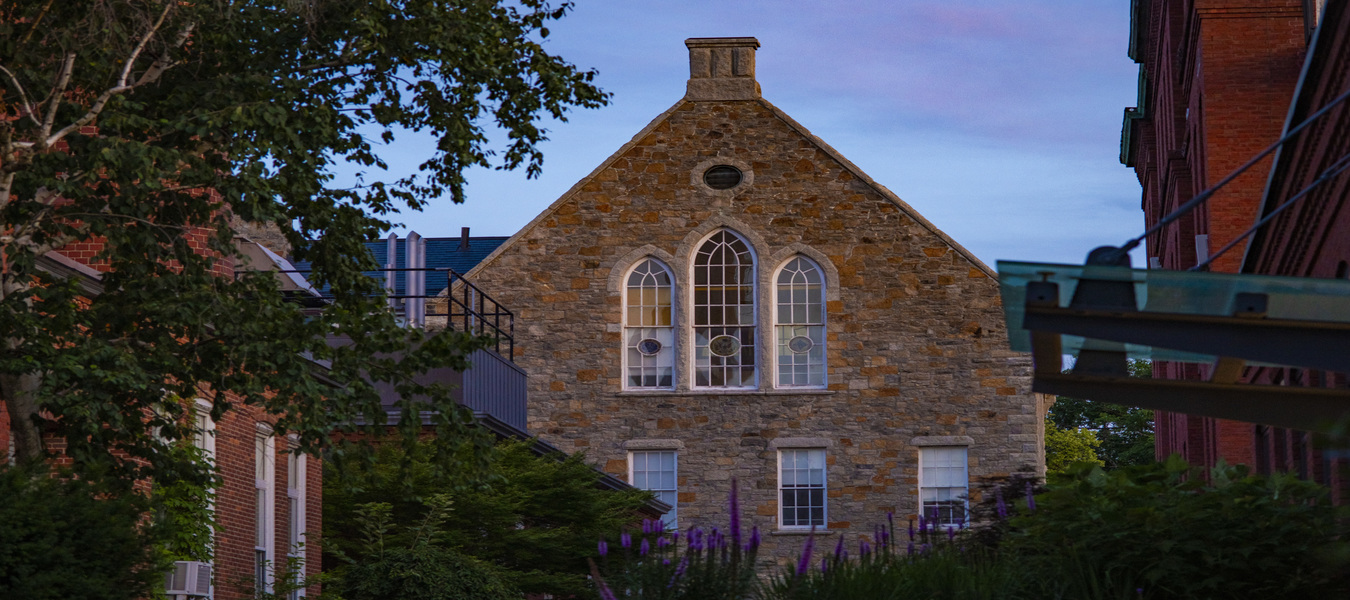WPI is laying the groundwork to bolster and expand its research enterprise in several disciplines, while continuing its founders’ vision of innovating theory and practice for the 21st century workforce.
In keeping with that vision, WPI is now a member of eight institutes in Manufacturing USA, a public-private partnership that took effect in 2014 when President Barack Obama signed the Revitalize American Manufacturing Act, a measure aimed at scaling up advanced manufacturing technologies and processes. Congressional funding—at $70 million per institute—is to be matched by private and other non-federal funds to create an initial network of 14 institutes in which industry, academia, and government partners collaborate and leverage existing resources to nurture manufacturing innovation and accelerate commercialization.
The Daily Herd recently sat down with Bogdan Vernescu, vice provost for research, to discuss WPI’s involvement in Manufacturing USA, the changing face of a manufacturing economy, and the future of manufacturing in the United States.

Bogdan Vernescu
Herd: Why is it important for WPI to be involved in Manufacturing USA?
Vernescu: WPI has been in the business of training students for the manufacturing workforce in Massachusetts for 150 years. In the 21st century, there’s a need for different manufacturing skills. Manufacturing has been evolving quite a bit, and the traditional ways to manufacture have been replaced. So, on the one hand you need a well-trained workforce for the new type of manufacturing. On the other hand, there is a need for translating the research at universities to new products that incorporate novel ideas and novel technologies. And so, the focus of the institutes is to fund the efforts at the interface between universities and industry, a place that traditionally didn’t have a lot of funding, and help speed up innovation and new products by connecting and forcing industry and universities to play together.
Herd: Have universities and industry played well together in the past?
Vernescu: Sometimes yes and sometimes no. Compared to European universities, probably not as much. I mean, there are some universities that do this well, and there are groups within universities that do this well. But culturally, things need to change more in the favor of these types of partnerships.
Herd: Talking about collaboration, WPI is involved in eight of the 14 current institutes focused on everything from clean energy to biomanufacturing to robotics. What makes WPI such a strong player across the spectrum?
Vernescu: What’s interesting for us is that we’re doing all of the things that you mentioned, but we are going to look at these from the manufacturing perspective. So while we’ve been very good at the traditional manufacturing—such as metal manufacturing—we have developed strength in the last couple of decades in health and biotechnology, robotics, data science, and cybersecurity. And this comes for WPI at a very good time because this is making us focus on the manufacturing component of those areas.
Herd: Many people associate manufacturing with making a product. But there’s a lifecycle that begins with an idea and ends with a product. In between there’s a lot of activity, right?
Vernescu: That’s right. Manufacturing is often associated with jobs that are not necessarily the cleanest jobs in the world, or that they’re very physical jobs. Actually, a lot of the manufacturing jobs for this century aren’t in those categories—neither very dirty nor very physical. It’s a message that we need to be able to advance so that the public understands and appreciates. Ultimately, we’d like to see more students in manufacturing.
Herd: WPI seems to be positioned perfectly for this national effort since we’ve been forerunners in so many areas. How quickly can WPI affect change through our involvement in these institutes?
Vernescu: Change is usually a challenge and is not fast. Still, I think we have a very good background to be able to do that faster than others would be able to. So our ramping up will probably be faster than at other universities. We have a tradition of working with companies. … So this is a continuation of that type of activity, and a continuation in the sense that we have not necessarily just developed new products in these collaborations, but we’ve also developed new ideas. This initiative is taking us to the next level, where we’ll actually be using innovative ideas for new products.
Herd: More broadly, are there specific challenges for academia with these new institutes, or is it easier because they have a built-in expertise?
Vernescu: It’s easier because of the built-in expertise universities have. The challenge comes from understanding what types of research and ideas in the universities can be rapidly scaled up and what we can take from the lab bench into a product that can be produced in mass.
“This initiative is taking us to the next level where we’ll actually be using innovative ideas for new products.” -Bogdan Vernescu
Herd: I know the institutes are still forming, but what types of projects will take shape over the next year?
Vernescu: The project with LIFT (Lightweight Innovations for Tomorrow) is our oldest partnership. They have already provided us two or three rounds of funding of nearly $2 million. The next one is with Advanced Integrated Manufacturing in Photonics where we’re partnering with Quinsigamond Community College, the AIM Academy at MIT, and a number of industries in central and southern Massachusetts. We’re going to have a facility with the most advanced equipment in integrated photonics that some of these small-to-medium industries don’t have. So we’re going to help them develop and test new products and train their workforce. There are several interesting projects in all the eight institutes, and we are in different stages of planning for all of these.
Herd: Why is that important?
Vernescu: It’s important and interesting because it’s opening collaborations between faculty in different departments—eg. mechanical engineering and physics. We understood about 15 years ago that departments don’t really matter. And when we developed Gateway Park and the Life Sciences and Bioengineering Center, we figured out that it doesn’t matter what department faculty are affiliated with. What really matters is what research they are doing. So, the way they are arranged in Gateway is by area of research, not by department, and that is facilitating collaboration among people who have different backgrounds and training and different methods of research. This is where the innovation starts happening. The other advantage is that all these activities need to be grounded in the industry’s needs, and that brings our research closer to the product development, thus making faculty and students interact more with companies.
Herd: And you anticipate strong collaboration between WPI faculty and the institutes?
Vernescu: I do. We’ll focus in the next 12 to 18 months in understanding how we can contribute to all of these institutes and how we can put things together so that we can take advantage of the fact that we are in several of them and have some economy of scale when we’re developing the processes and training programs.
Herd: Various news reports point to large manufacturing job losses in the United States. But one recent story says that modern manufacturing will actually have nearly 3.5 million job vacancies over the next decade. How do we parse the debate over what is real versus what is imagined in the manufacturing economy?
Vernescu: I sit on one of the working boards focused on technology for the Council on Competitiveness in Washington, D.C., and I meet with chief technology officers from Fortune 500 companies. And the discussion is invariably, ‘We have jobs, but we cannot find people who are qualified to take our jobs.’ So, I think that it’s true, there are jobs in manufacturing, but it’s not traditional manufacturing and this [non-traditional manufacturing] is exactly what these institutes are doing. They are helping universities collaborate with industry and, as a result, understand better where the jobs are and how exactly we need to train the students for them to be successful in getting these jobs.
Herd: Can you give me a sense of some of these non-traditional manufacturing jobs?
Vernescu: Think about integrated photonics and developing sensors, for example, where there are large foundries where you develop the silicon chips. On one hand, you need people with PhDs and master's degrees who will design the photonics sensors; on the other hand, you need technicians with advanced skills who will be able to test and package them.
Herd: Do you have another example?
Vernescu: Tissue manufacturing is an industry that doesn’t exist now. We are building that industry [through Manufacturing USA] and that’s one of the areas where the U.S. cannot afford to fall behind. If we don’t have the workforce and the brains to help us develop it, then we will lose at the global level.
“We have an opportunity to regain our place in Massachusetts as a leader in manufacturing of the 21st century … and to connect with not only the local industry but the national industry.” -Bogdan Vernescu
Herd: Retraining manufacturing workers is another big component for Manufacturing USA. At WPI, you can find 18-year-old students retraining 50-year-old manufacturing workers in Washburn Labs on the computer numeric control (CNC) machines. Is WPI in a unique position in that respect?
Vernescu: I’m glad that you brought this up because we have a long tradition of collaborating with the Massachusetts Manufacturing Extension Partnership. MassMEP has connections to the hundreds of small-to-medium manufacturing companies in Massachusetts that need our support for retraining and other areas. We do that with the CNC machines but also with the grant we have from the MassDevelopment Finance Agency to help small companies grow.
Herd: Are there any other aspects of our work at WPI that is distinctive and can benefit Manufacturing USA?
Vernescu: Most of these institutes are the interface between engineering and biology or chemistry, for instance, or sciences in general. We have a long tradition of multidisciplinary work, something we not only teach our students, but practice ourselves.
Herd: What are you most excited about with this new initiative?
Vernescu: I’m excited that we have an opportunity to regain our place in Massachusetts as a leader in manufacturing of the 21st century. It’s also an opportunity to connect with not only the local industry but the national industry, and to teach our students what’s new in this century in manufacturing.
- By Andy Baron
